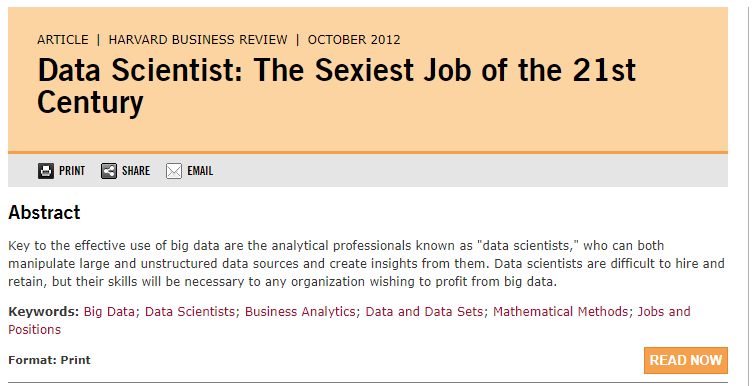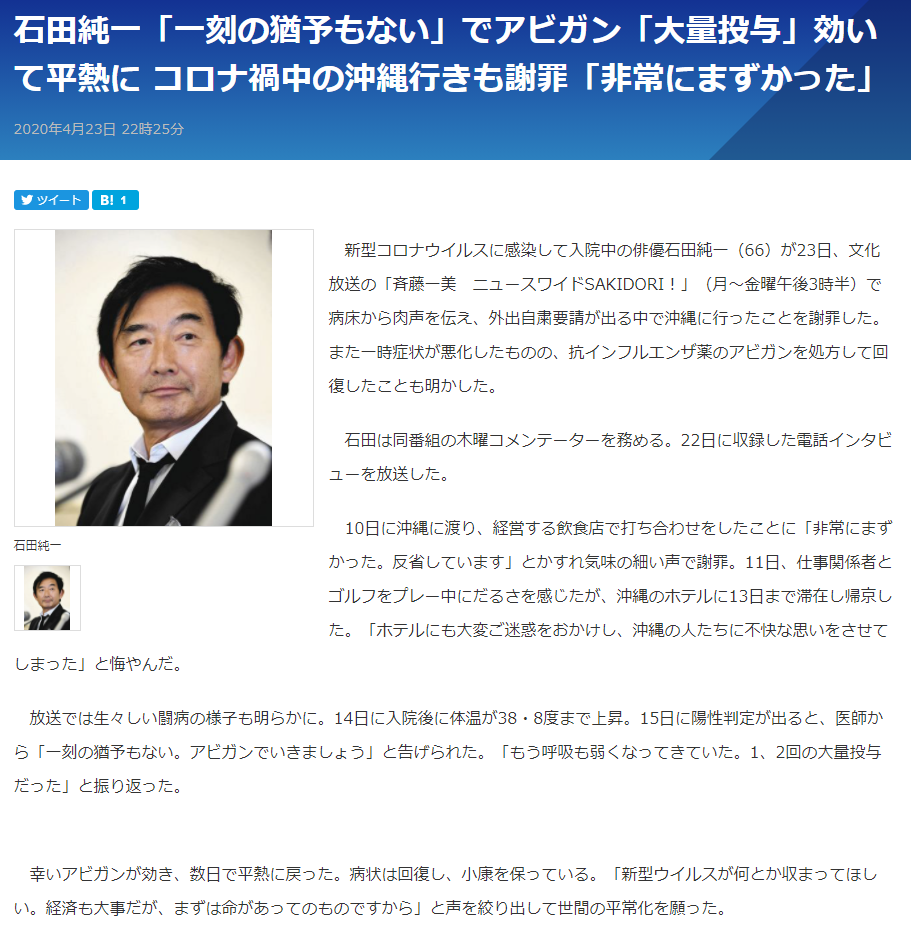class: center, middle, inverse, title-slide # Lecture 1: Introduction ### Instructor: Yuta TOYAMA (遠山 祐太) ### Last updated: 2021-06-08 --- class: title-slide-section, center, middle name: logistics # Welcome to the Course!! --- ## About me - Instructor: Yuta Toyama - Research Field: Industrial Organization, Applied Econometrics, Energy and Environmental Economics --- ## Data analysis is more important than ever .center[] --- ## Goal of the Course - We will learn **causal inference (因果推論) ** in economics. - Goal 1: How to establish **causality** in data analysis. - Various tools: RCT, regression, IV, DID, RD, structural estimation - Implementation using R language. - **Students who took this course before won an award at the Data Science Competition and the thesis competition.** - Goal 2: How to critically examine causal statements in research and journalism. - **Is my "causal" claim above really true?** --- ## Contents today 1. What is causality? 2. Case: Data analysis during the Covid-19 crisis 3. Review of Probability: Conditional Expectation --- class: title-slide-section, center, middle name: logistics # What is Causality? --- ## Causal Questions in Economics and Political Science - Causality (因果): X causes/affects/impacts Y **holding other things fixed *(ceteris paribus)*** - Many questions are causal! - How much does an additional year of schooling increase your wage ? - How does online advertisement affect sales of products? - Do mergers between firms increase product prices? - Does democracy cause economic growth? - Does higher turnout benefit Democrats in presidential election? --- ## Theoretical Models Implies Causal Relationship - Consumers' Utility maximization: - Higher income leads to more consumption (all else being fixed) - Higher price (typically) implies less consumption (all else being fixed) - Educational investment leads to higher income due to - higher human capital (人的資本) - signalling effect (シグナリング) - Government spending stimulates GDP by multiplier effect (乗数効果) --- ## Data Analysis to Establish Causality - With data, we want to understand what is going on in reality. - Ex 1: Test whether theoretical prediction is true. - Ex 2: Determine the sign of ambiguous theoretical prediction. --- ## Descriptive Analysis (記述統計) - Describe the data (sample) as a first step. - College grads earn 98% more per hour than others - Income inequality higher now than 30 years ago - Health care costs growing more slowly after the Affordable Care Act (ACA) - Airline prices higher now than before merger wave - Such analysis tells you the **correlation (相関)** between two variables --- ## Does **correlation** imply **causality**? - Example 1: Cities with many police officers have more crimes (positive correlation). - Does this really mean “X (police officers) causes Y (crimes)”? - Example 2: Those who went to college earn more money by 10%. - Is this difference only due to college? --- ## Three possible channels 1. Causality 2. Reverse causality 3. Third factor, or **confounder (交絡因子)** - often called **spurious correlation (見せかけの相関)** --- ## Three Channels in Figure --- ## Case: Is Avigan effective treatment for COVID-19? - Some Japanese celebrities who caught COVID-19 report their own experience that Anti-flu drug Avigan was effective for recovery. - [An episode from Junichi Ishida](https://www.chunichi.co.jp/chuspo/article/entertainment/news/CK2020042302100136.html) - Does this mean Avigan is a silver bullet for COVID-19? - Why do we care? - Side effects of Avigan, resource allocation of public funds, etc. --- .center[] --- ## Difficulty 1: Counterfactual (反実仮想) - **Counterfactual outcome** is never observed - Even without Avigan, a patient might have gotten better. --- ## Difficulty 2: Endogenous selection of treatment - Suppose we have data on patients who got and did not get Avigan in their treatment. - Does comparison of those people give you treatment effect of Avigan? - Issue: Those who get Avigan and who do not get might be quite different in other aspects. --- ## Solution: Clinical Trial - Collect patients and **randomly** choose patients who are given the treatment. - Treatment group and control group. - Compare the outcome of treatment and control group to see the effectiveness of treatment. - Since 2020, various institutes have been conducting a clinical trial on Avigan for COVID-19. The results have been not assuring, though. --- class: title-slide-section, center, middle name: COVID19 # Case: Data Analysis during the COVID-19 Crisis --- # Data Analysis during the COVID-19 Crisis - Perhaps, you might have started to see data analysis in the news more often than ever. - `#` of positive cases each day - flow of people (人流) based on mobile phone location (e.g., Agoop, NTT Docomo) - Effective reproduction number (実効再生算数) - Efficacy of COVID-19 vaccine from clinical trial - Researchers in many fields have been conducting various analysis to tackle the crisis. - Some examples in Economics - Macroeconomic analysis using SEIR (Susceptible-Exposed-Infectious-Recovered) model - Nowcasting (ナウキャスティング) using alternative data (オルタナティブデータ) - Evaluation of various policies towards the crisis. -> more on later --- # Reference: 経済セミナー別冊「新型コロナ危機に経済学で挑む」 --- # Difficulties in Policy Analysis - 1: **Observational study (観察研究)**: - Data is observation of what people actually do. - Unlike clinical trial, cannot randomize treatment of policy in general. - 2: Data limitation - May not be able to observe what researchers need. - With these obstacles, we still need to **draw the conclusion while clearly acknowledging its limitations**. --- # Case: Special Cash Payment - Special Cash Payment (特別定額給付金): 100,000 JPY for everyone. - Question: How much did people actually spend? - Why we care? - Controversial policy (both supporters and ) - Many countries have done a similar policy. - Three empirical studies on this issue: - Kubota, Onishi, and Toyama (2021): Bank account data - Kaneda, Kubota, and Tanaka (2021): Financial app data - 宇南山・古村・服部 (2021): Official household survey (「家計調査」) - I will explain Kubota, Onishi, and Toyama (2021) in detail. --- class: title-slide-section, center, middle name: logistics # Review of Conditional Expectation --- # Conditional Expectation (条件付き期待値) - Overview - We are interested in the relationship between two different variables, say `\(X\)` and `\(Y\)`. - Conditional expectation is a way to characterize such relationship - Quick review of conditional expectation. - Reference - Angrist and Pischke MHE Chapter 2 and 3. - 奥井ら --- # Conditional Distribution (条件付き分布) - Let `\(Y\)` and `\(X\)` be the random variables (確率変数). - Let's say `\(Y\)` is the outcome variable and `\(X\)` is the explanatory variable. - The probability distribution function (確率分布関数) - Discrete (離散): `$$P(y,x)=Prob(X=x,Y=y)$$` for `\(y\in\{y_{1},\cdots,y_{L}\}\)` and `\(x\in\{x_{1},\cdots,x_{L}\}\)` - Continuous (連続): the density function (密度関数) `\(f(y,x)\)` for `\(x\in\mathbb{R}\)` and `\(y\in\mathbb{R}\)`. <!-- - Definition: **Support (台)** of the random variable `\(X\)`, denoted by `\(supp(X)\)` is the range within which the random variable `\(X\)` can take a value. --> <!-- - In the discrete case, `\(supp(X)=\{x_{1},\cdots,x_{L}\}\)` --> --- - The conditional probability mass function for discrete case `$$P(y|x)=\frac{P(y,x)}{P(x)}$$` where `\(P(x)=\sum_{i=1}^{N}P(y_{i},x)\)` - The conditional density function for continuous case `\(f(y|x)=\frac{f(y,x)}{f(x)}\)` --- # Conditional Expectation (条件付き期待値) - The **conditional expectation** function `$$E[Y|X]=\sum_{l=1}^{L}y_{l}P(Y=y_{l}|X)$$` for a discrete case and `$$E[Y|X]=\int_{-\infty}^{\infty}yf(y|X)dy$$` for a continuous case. --- ## Properties of Conditional Expectation Function - Proposition CE1 `$$E[c(X)|X]=c(X)$$` for a function `\(c(\cdot)\)`. - Proposition CE2 (linearity) `$$E[a(X)Y+b(X)|X]=a(X)E[Y|X]+b(X)$$` for function `\(a(\cdot)\)` and `\(b(\cdot)\)`. - Proposition CE3. If `\(X\)` and `\(Y\)` are independent, then `\(E[Y|X]=E[Y]\)` --- - Proof of CE3 (for a discrete case): `\begin{eqnarray} E[Y|X]&=&\sum_{l=1}^{L}y_{l}P(Y=y_{l}|X) \\ &=&\sum_{l=1}^{L}y_{l}\frac{P(Y=y_{l},X)}{P(X)}=\sum_{l=1}^{L}y_{l}\frac{P(Y=y_{l})\times P(X)}{P(X)}=E[Y]. \end{eqnarray}` Note that we use `\(P(Y=y,X=x)=P(X=x)P(Y=y)\)` by independence. --- # Law of iterated expectation (繰り返し期待値の法則) - Proposition CE4 (**law of iterated expectation**)$$E[Y]=E[E[Y|X]]$$ - Expectation of conditional expectation `\(E[Y|X]\)` is unconditional expectation `\(E[Y]\)` --- - Proof for a discrete case `\begin{eqnarray} E[Y]&=&\sum_{l=1}^{L}y_{l}P(y_{l}) \\ &=&\sum_{l=1}^{L}y_{l}\left[\sum_{l'=1}^{L} P(y_{l},x_{l'})\right] \\ &=&\sum_{l=1}^{L}y_{l}\left[\sum_{l'=1}^{L}P(y_{l}|x_{l'})P(x_{l'})\right] \\ &=&\sum_{l'=1}^{L}P(x_{l'})\underbrace{\left[\sum_{l=1}^{L}P(y_{l}|x_{l'})y_{l}\right]}_{E[Y|X]}=E[E[Y|X]] \end{eqnarray}` - Note: A similar proof for the continuous case, though it requires some technical conditions for the exchange of integrals (Fubini's theorem). --- <br/><br/> - Proposition CE4' `$$E[Y|X]=E\left[E[Y|X,Z]|X\right]$$` - Conditional on `\(X\)`, can apply the law of iterated expectation. - Proposition CE5: If `\(E[Y|X]=E[Y]\)`, then `\(Cov(X,Y)=0\)`. - We often say `\(E[Y|X]=E[Y]\)` is **mean independence** - Remember: The opposite is not true. <!-- <br/><br/> --> <!-- - Proposition CE6: Suppose that `\(E[Y^{2}]<\infty\)` and `\(E[g(X)]<\infty\)` for some function `\(g\)`. Then `$$E[(Y-\mu(X))^{2}]\leq E[(Y-g(X))^{2}]$$` where `\(\mu(X)=E[Y|X]\)`. --> <!-- - Interpretation: --> <!-- - Suppose that we explain `\(Y\)` using some function `\(g\)` and data `\(X\)`. --> <!-- - The function `\(g\)` that minimizes **the mean squared error** is conditional expectation. --> <!-- --- --> <!-- - Proof: --> <!-- \begin{eqnarray} --> <!-- E[(Y-g(X))^{2}] &=&E[\left\{ \left(Y-\mu(X)\right)+\left(\mu(X)-g(X)\right)\right\} ^{2}]\\ --> <!-- &=&E\left[\left(Y-\mu(X)\right)^{2}\right]+E\left[\left(\mu(X)-g(X)\right)^{2}\right]\\ --> <!-- &+& 2E\left[\left(Y-\mu(X)\right)\left(\mu(X)-g(X)\right)\right]. --> <!-- \end{eqnarray} --> <!-- Using the law of iterated expectation, --> <!-- \begin{eqnarray} --> <!-- E\left[\left(Y-\mu(X)\right)\left(\mu(X)-g(X)\right)\right] &=&E\left\{E\left[\left(Y-\mu(X)\right)\left(\mu(X)-g(X)\right)|X\right]\right\} \\ --> <!-- &=&E\left\{ \left(\mu(X)-g(X)\right)\left(E[Y|X]-\mu(X)\right)\right\} \\ --> <!-- &=&0 --> <!-- \end{eqnarray} --> <!-- Thus, --> <!-- `$$E[(Y-g(X))^{2}]=E\left[\left(Y-\mu(X)\right)^{2}\right]+E\left[\left(\mu(X)-g(X)\right)^{2}\right],$$` which can take its minimum when `\(g(X)=\mu(X)\)`. --> --- # Another useful properties - Law of iterated probability `$$P(Y)=\sum_{l=1}^{L}P(Y|x_{l})P(x_{l})$$` for a discrete random variable `\(X\)` - Law of total variance `$$Var(Y)=E[V(Y|X)]+V[E(Y|X)]$$`